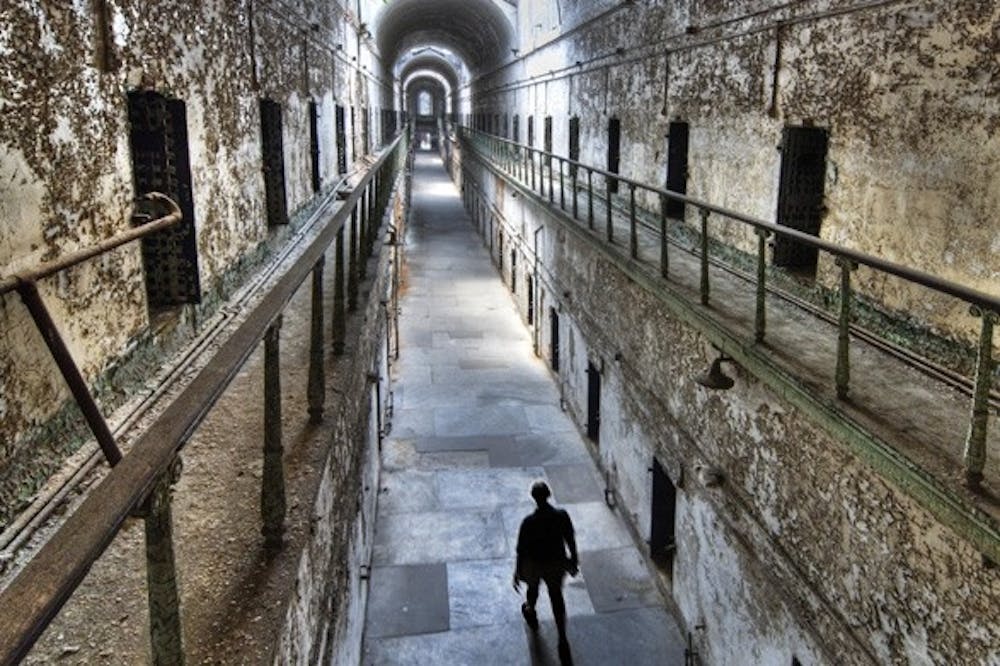Every October, the Eastern State Penitentiary dresses up for Halloween. The prison in North Philadelphia’s Fairmont neighborhood hosts “Terror Behind the Walls” its annual benefit where the fortress-like building is renovated into a helluva haunted house. As someone who gets scared walking around my kitchen alone at night, to me “Terror Behind the Walls” seems like a great way to ACTUALLY DIE. The reason why this haunted house is so terrifying—and so popular—is that it’s real.

ESP is an actual abandoned prison. It was the first to institute solitary confinement for all of its convicts in attempt to reform criminals: an unsuccessful original that’s inspired many, many replicas. “Terror Behind the Walls” reveals how well ESP lends itself to sensationalism—psychopaths! gore! zombie Al Capone!—and even in the daytime it can be hard to see beyond the chilling creepiness of the prison ruins. It can be hard to recognize that what is being sensationalized is individual human suffering. The prison housed notorious criminals like Al Capone, but the cells mainly contained people at the margins of society: poor, immigrant or unstable individuals confined in psychological isolation. It could be easy to dismiss the experience of ESP as an adrenaline rush, but a powerful and unexpected connection exists between the individuals in the penitentiary’s past and present: the prison’s art collection.

Working with local and national artists, ESP is as much an art gallery as a scary location. Karen Schmidt knitted her piece “Cozy” in 2011, inspired by an inmate who escaped by scaling the prison walls with yarn, Schmidt crocheted over the entire cell interior. In turning a cell into a giant scarf, the artist raises questions of home in the deprivation of comfort. In Cindy Moore’s “Other Absences” (2014), 50 monochrome portraits of men and women killed by the Penitentiary’s inmates gaze at the visitors from another cellblock. Addressing ESP’s legacy as the first modern prison, William Cromar’s “GTMO” (2006) presents a holding cell from Guantanamo Bay recreated exactly within an ESP cell.

“Terror behind the Walls” is a spectacle, but Eastern State Penitentiary is an exhibition. The number of artworks and their lengths of stay vary, but their vital collective role remains in creating a link between the prison’s present–day visitors and its past residents. These artworks tell the individual stories that make up the prison’s impersonal, impenetrable narrative. There is indeed terror behind the walls.

